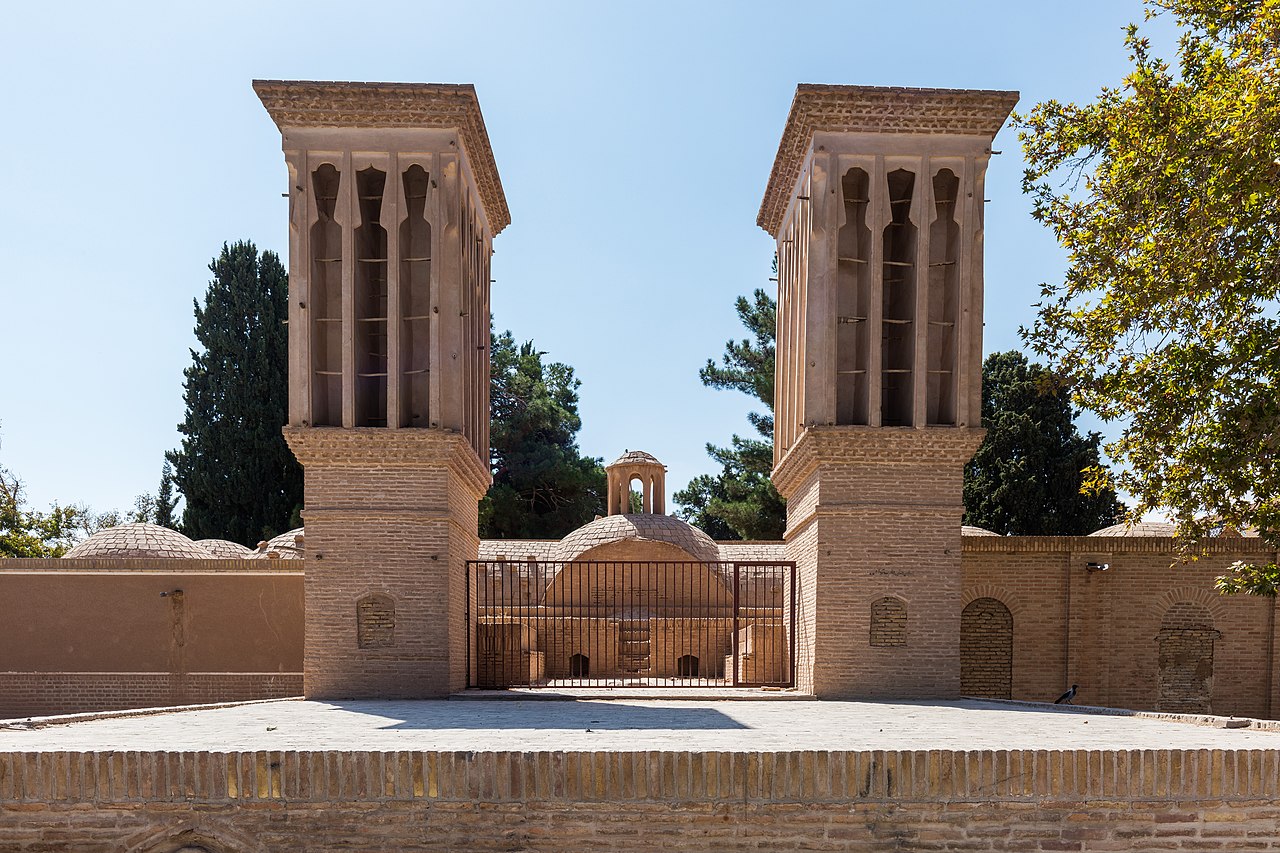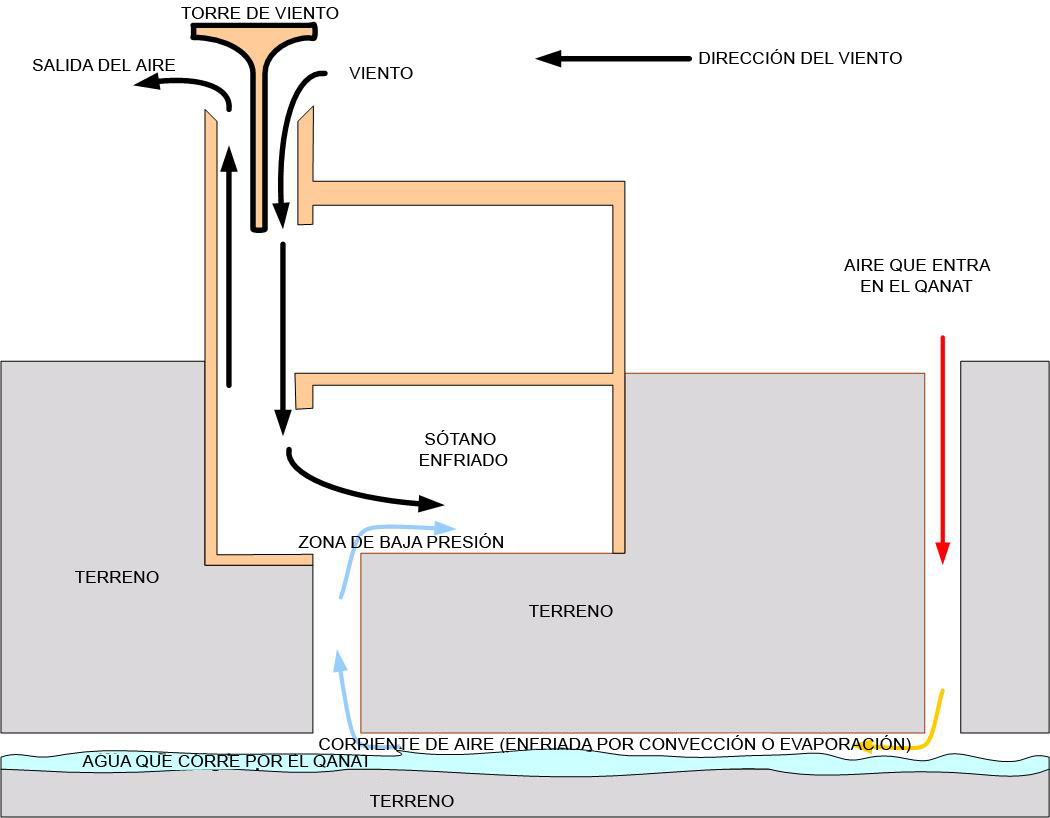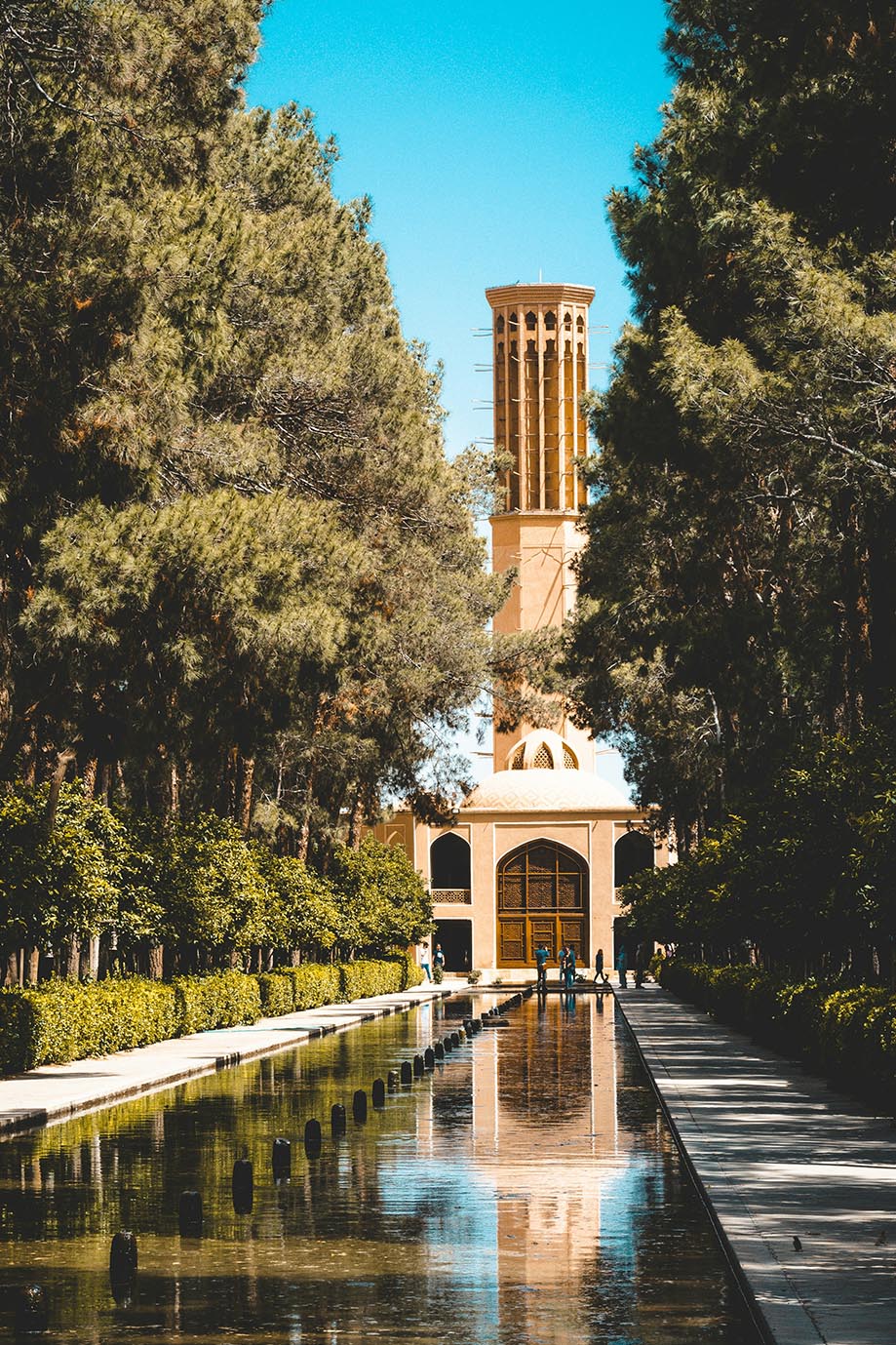
In the heart of Iran, in the vast plain that connects two deserts and a valley, lies the city of Yazd. There, among winding alleyways, courtyards and tiles, the desert heat is reduced by combining qanats that run under the ground with badgirs that look up to the sky.
Qanats are underground water channels while badgirs, windcatchers, are architectural elements that provide natural ventilation and cooling for buildings. Both take us back thousands of years in history and are examples of traditional techniques for adapting buildings to the most extreme climates.
Although the invention of wind towers is often traced to Persia (modern-day Iran), examples can be found in many other countries, such as Egypt, the United Arab Emirates and India. Today, these systems and the basics of their operation are imitated in modern buildings.
How does a windcatcher work?
The windcatchers in many Yazd homes and buildings have a dual function as ornamental elements and to create cross ventilation and passive climate control in buildings. The mechanisms behind these tall towers can reduce the temperature inside by up to 10 degrees Celsius.
How do they work? The simple explanation would be that the cool wind enters the towers, is directed downwards through different ducts, and blows the warmer air trapped inside outwards. But the long answer is much more complex. There are many types of windcatchers, the shape and height of which vary according to the climate and wind types in each region. In places where the wind always blows in the same direction, they have only one opening; in those places where the wind is more varied, they have several.

Windcatchers at the Shah Nematollah Vali shrine in Mahan, Iran. Diego Delso (Wikimedia Commons).
There are unidirectional, bidirectional, multidirectional, and cylindrical windcatchers. Their chimneys can have only two flues or more than ten, and can be divided in a variety of ways. In addition, in areas where the winds are warm, the ducts are smaller to help cool the air. Contrary to their name, some versions of these architectural elements also function when there is no wind, making ventilation possible.
Many of the windcatchers in the city of Yazd combine their mechanism with that of qanats, canal systems also devised in Persia thousands of years ago, and which have traditionally collected groundwater and conducted it beneath towns and cities. Through these windcatchers, air enters areas that are already cooled thanks to the influence of the qanat.

Operation of windcatchers supplemented with channels. Illustration based on an article published in Scientific American magazine in 1978. R@ge (Wikimedia Commons).
The water cools the environment and increases the humidity of the air, which helps to improve the thermal sensation and increase comfort in desert climates, where the air is very hot and dry. In this way, the combination of underground qanat and the high towers creates a very efficient system. Other mechanisms play with wind, air pressure, currents and evaporation to achieve similar results.
What is the mark of windcatchers on today’s architecture?
After centuries of history, these constructions have come to define the profile of many cities and become architectural symbols of different countries. One of the best known and tallest surviving windcatchers is that found in the Dowlatabad garden in Yazd.

Windcatcher in the Dowlatabad garden in Yazd, Iran. Mohamadsadegh Darvishamiri (Unsplash)
The beauty and efficiency of windcatchers have inspired architects and engineers throughout history. In recent decades, they have come to be seen as a solution to climate change. Increasing the ventilation of buildings reduces the demand for air conditioning, limits the use of fossil fuels, and thus reduces the emission of greenhouse gases into the atmosphere.
The goal of integrating the functioning of these traditional mechanisms into modern urban contexts and buildings has led to the development of new designs and technologies. Today, there are many examples of windcatchers in Masdar, the city that the United Arab Emirates began building in 2008. There, new versions of the traditional towers distribute the wind through the streets.
Another example is the so-called monodraught windcatcher, designed by an Australian company and in use for two decades now. These devices promote natural ventilation using very little electrical energy. As the company behind the mechanism explains, cool air enters the room and blows out the stale air.
Europe is also host to mechanisms based on these tall towers. One example is the Bluewater shopping center in Kent, UK. In this building, several rotating windcatchers are integrated into an intelligent building management system (BMS), thus combining age-old tradition with the latest technologies.




2 comments
k john
21 of May of 2024
Such a nice article, When coming to Determining the Material Properties of Steel-Fiber-Reinforced, I would always recommend to call Building materials trading company Arab Basalt Fiber Company is a complete integrated production facility for Basalt Fiber Reinforcement Polymer Rebar (BFRP Rebar), located in the Emirate of Fujairah – United Arab Emirates.
k john
21 of May of 2024
Weblink: https://arabbasaltfiber.com/